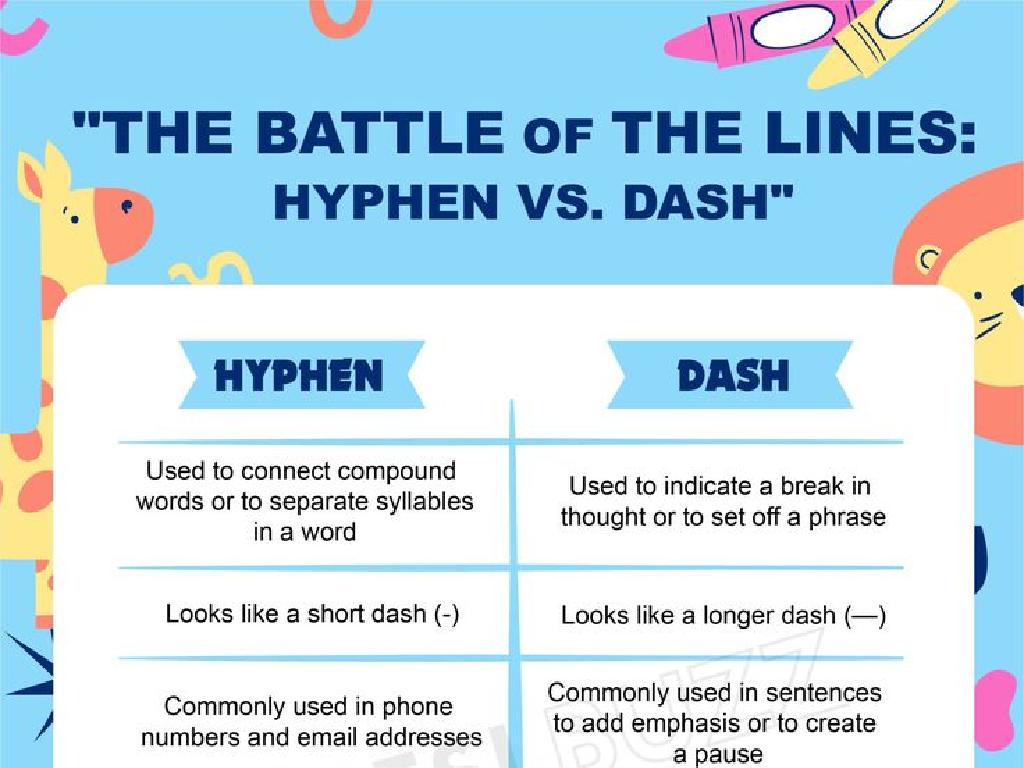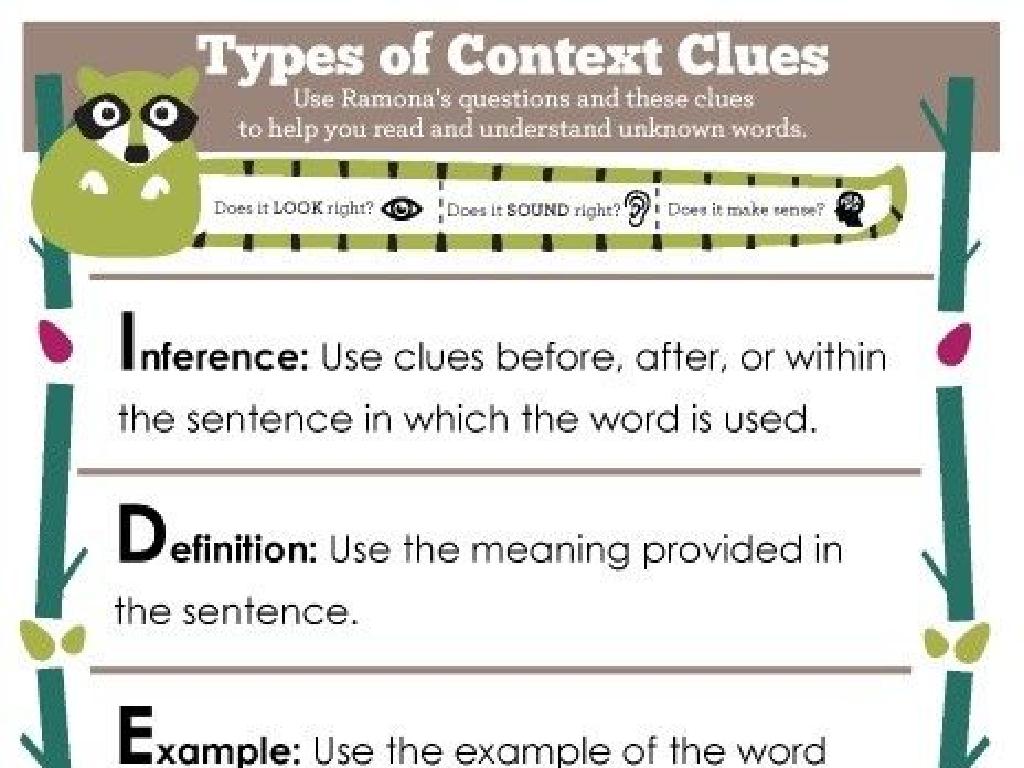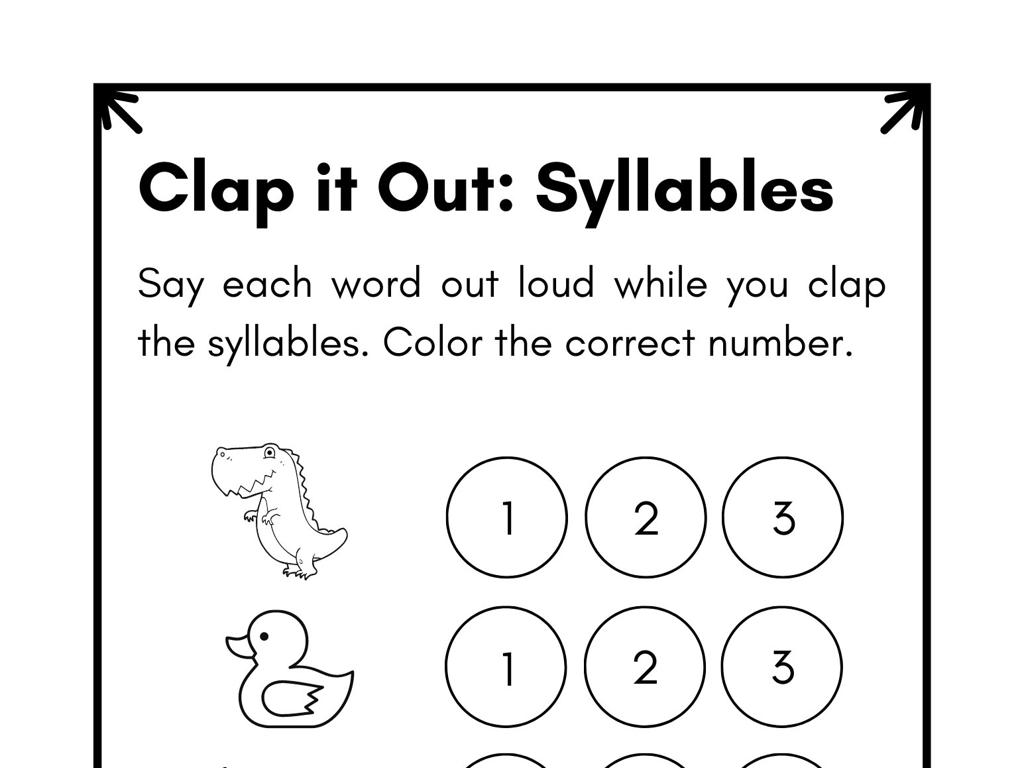Times Of Everyday Events
Subject: Math
Grade: First grade
Topic: Time
Summary: This first grade math presentation introduces the concept of time by connecting it to everyday events and routines. Students will learn to identify morning, afternoon, and night, read clocks, and understand the importance of scheduling daily activities like breakfast, playtime, and bedtime. Interactive activities, such as making paper clocks and creating class schedules, make learning about time hands-on and relatable, helping young learners develop essential time management skills.
Please LOG IN to download the presentation. Access is available to registered users only.
View More Content
Good Morning, First Graders! Let’s Learn About Time
– What is time?
– When do things happen?
– Morning, afternoon, night: breakfast, school, bedtime
– Time helps us plan
– We use time to schedule activities like playtime and homework
– Why time is important
|
Begin the class with a cheerful greeting to engage the students. Introduce the concept of time by explaining that it helps us know when events occur, such as eating breakfast in the morning or going to bed at night. Emphasize the importance of time in organizing our daily activities, such as knowing when to go to school or when to do homework. Use examples that are relevant to the students’ routine to make the concept relatable. Encourage the children to think about their day and how they use time to decide what they do next. This will help them understand the practical applications of time in their lives.
Understanding Time in Our Daily Lives
– Time helps us organize the day
– Clocks show us the current time
– Clocks can be digital or analog with hands
– Daily activities have set times
– Breakfast, playtime, and school hours
– Time management is important
|
This slide introduces the concept of time to first graders. Begin by explaining that time is a way to measure when things happen, from minutes to hours to days. Show them different types of clocks and how to read them. Discuss the typical times for daily activities like eating breakfast, playing, and learning in school. Emphasize the importance of knowing the time to manage our day well. Use examples relevant to their routine to make the concept relatable. Encourage questions to ensure understanding.
Understanding the Day: Morning, Afternoon, Night
– Morning: Start of your day
– Wake up, eat breakfast, and go to school
– Afternoon: After lunchtime
– Finish school, play games, and do homework
– Night: Time for dinner and bed
– Eat dinner, read stories, and sleep
– Recognizing daily time periods
|
This slide aims to help first graders understand the concept of time by breaking down the day into three familiar parts: morning, afternoon, and night. Explain that morning is the time when the day begins, usually when we wake up and prepare for school. Afternoon follows lunch and is often filled with activities such as playing and learning. Night is when the day winds down, we have dinner, and get ready for bed. Use a visual schedule with pictures representing each time of the day to help students associate activities with morning, afternoon, and night. Encourage them to think about what they do during these times and share their routines.
When Do We…? Daily Activities
– Have breakfast in the morning
– Start the day with a healthy meal
– Go to school in the morning
– Time to learn new things with friends
– Play in the afternoon
– Have fun and exercise after lunch
– Go to bed at night
– Rest well for the next day’s adventures
|
This slide is aimed at helping first graders understand the concept of time by relating it to their daily routine. Discuss the importance of having breakfast in the morning to fuel their day. Explain that going to school in the morning is when they learn and play with friends. Playing in the afternoon is a time for fun activities and exercise, which is important for their health. Lastly, going to bed at night is crucial for getting enough rest for the next day. Encourage the students to think about their own routines and what times they do these activities. This will help them relate the concept of time to their everyday lives.
Reading the Clock: Telling Time
– The big hand counts minutes
– When the big hand moves, it’s counting minutes.
– The little hand points to hours
– The little hand tells us what the hour is.
– Practice telling time with us
– We’ll use clocks to learn how to read time.
|
This slide introduces the basics of reading a clock to first graders. Emphasize the difference between the hour hand (shorter) and the minute hand (longer). Use a large classroom clock to demonstrate. Have the students practice by setting the clock to specific times and asking them to read it aloud. Incorporate activities where students draw the hands on a clock face to represent given times. Encourage them to look at clocks at home and report back the times they see during different daily activities like lunch, playtime, or bedtime.
Activity Time: Making Paper Clocks!
– Craft your own paper clock
– Learn to set the clock hands
– We’ll practice moving the big and small hands to show different times
– Match times to daily activities
– Think about when you wake up, eat, play, and go to bed
– Share your favorite activity time
– Tell us what time you like to do something fun!
|
This activity is designed to help first graders understand the concept of time through a fun and interactive craft. Provide each student with a paper clock template and brads to attach movable hands. Demonstrate how to set the time by moving the hands to specific positions. Encourage students to think about their daily routine and use their paper clocks to show what time they perform various activities, such as eating breakfast or going to school. Finally, allow each student to share with the class the time they enjoy their favorite activity. This will not only reinforce their understanding of time but also allow them to practice public speaking. Possible activities: setting the clock for meal times, bedtimes, or the start of school.
Class Activity: Schedule Our Day
– Let’s make a class schedule
– Think about your daily routine
– What do you do in the morning, afternoon, and night?
– Match activities with times
– Breakfast at 7 AM? Homework at 5 PM?
– Place them on our class clock
– Use the big clock to show when you do each activity
|
This interactive activity is designed to help first graders understand the concept of time in a fun and engaging way. Start by discussing the importance of having a schedule. Encourage students to think about their daily activities at home and what time they usually do them. Provide a large clock face for the class, and have cut-out pictures or cards representing different activities such as eating breakfast, going to school, playing, and sleeping. Students will take turns placing these activities at the appropriate times on the clock. This visual representation helps them associate times with common daily events. As an extension, you can ask students to draw their own clocks and place activities accordingly. This will reinforce their understanding of time and daily schedules.
Reviewing Our Time Knowledge
– Recap today’s time lesson
– Discuss daily routines
– Share what you do at different times: morning, afternoon, night.
– Open floor for questions
– Understanding time of day
– Morning is when you wake up, afternoon is after lunch, night is when you go to bed.
|
This slide aims to review what the students have learned about time during today’s lesson. Start by asking the students to summarize the lesson to reinforce their understanding. Then, engage them by discussing their daily routines, which helps them apply the concept of time to their lives. Encourage them to think about what they do in the morning, afternoon, and night. Open the floor for any questions the students might have, ensuring they feel comfortable asking for clarification. Lastly, reinforce the concept of different times of the day and their significance. This interactive session will help solidify their understanding of time and its importance in everyday events.





-a-solution-to-the-nonlinear-equation/nonlinear_graphs_examples.png)